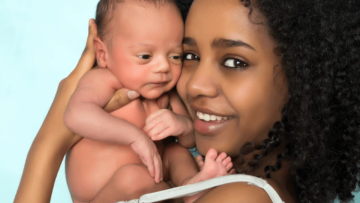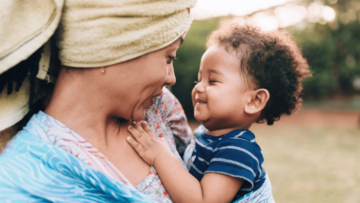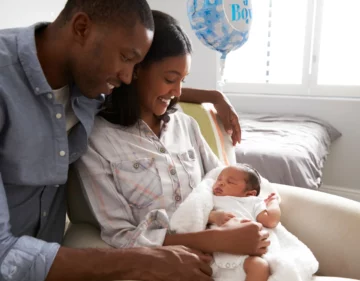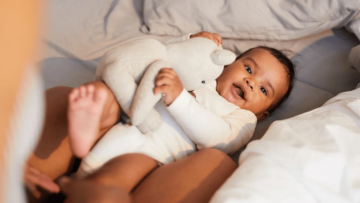
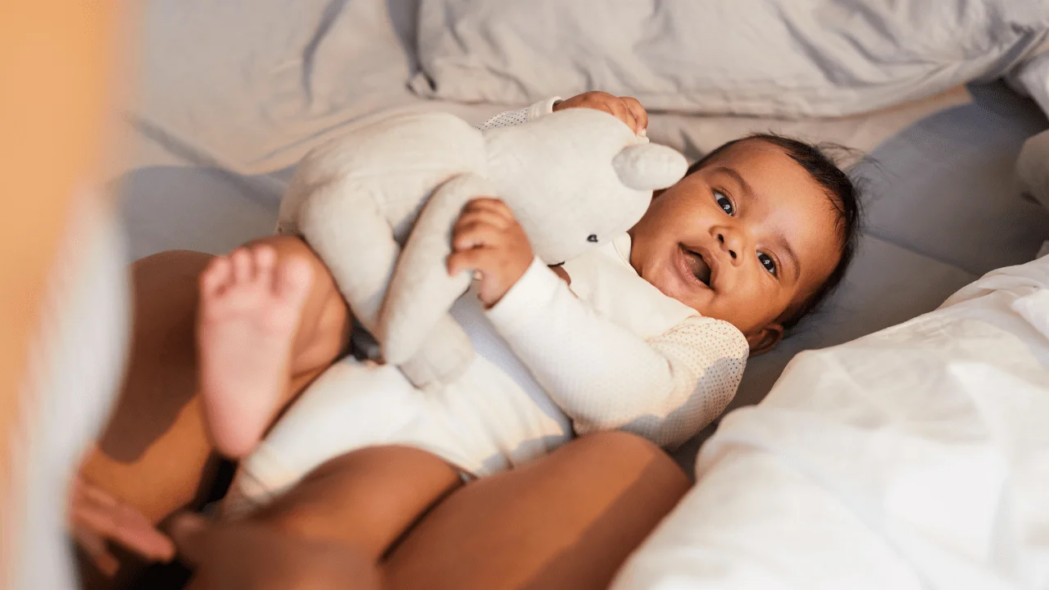
Loveys! Many babies become attached to a particular comfort object, or “lovey,” between 8 and 12 months old. This is usually a blankie, stuffed animal, or another soft object. It’s completely normal for kids to have a lovey, and loveys can ease separation anxiety and help your child adjust to new situations. (Some babies and kids never take to one, however.) For safety reasons, don’t let your baby sleep with a lovey until after their first birthday.
IN THIS ARTICLE
- What is a baby lovey?
- How to introduce a baby lovey
- When can my baby sleep with a lovey?
- Tips for using loveys or comfort objects
- Can a child be too attached to a lovey?
What is a baby lovey?
Many children become attached to a blanket, a teddy bear, or some other “lovey” that they use for comfort at bedtime and in other situations when they need soothing.
The psychological term for this is “transitional object.” Why? Because as babies begin to make the journey from wholly dependent newborn to independent human being, a lovey can help with the transition.
Many kids develop an attachment to some sort of lovey (also called a “comfort object”). Those who do usually gravitate to a lovey around 8 to 12 months old. Some start wanting one as early as 6 months old.
A lovey feels, smells, and looks familiar. It’s a portable reminder of the comfort and security of home and parents – and it enables many children to feel more confident as they venture into the world outside their parents’ arms.
A lovey is also usually soft and cuddly, whether it’s a well-worn stuffed dog, a classic “security” blanket, or a silky pillow. Holding it just feels good.
A lovey can also be useful for parents, too. That beloved stuffed bear or blankie can help your little one calm down. And at times of stress or transition – like starting preschool, moving from a crib to a big kid bed, or traveling to a new place – a lovey is something your child can take along for support. It can help with separation anxiety, too.
How to introduce a baby lovey
Your baby will probably end up with plenty of blankets and stuffed animals, and you can choose one you think would make a good lovey.
Then, you can encourage a developing attachment by taking a potential lovey with you to new (and potentially scary) places, such as the doctor, a new daycare, or a visit with someone your little one hasn’t met before. Your child will start associating the lovey with you, and will then use the lovey for comfort when you’re not there.
If your child doesn’t seem interested in the object you had in mind, you could introduce multiple potential loveys and see if there’s one they like. Your child may even discover and gravitate to a comfort object without your help.
Kids who alternate between various loveys may associate different loveys with different situations: one to bring to the park and another for evenings, for instance. The number of loveys kids use often dwindles to one or two, eventually.
It’s also likely that your child will find different ways to self-soothe in different phases of life. A child turning to a comfort object isn’t so different from what we do as adults when we take out our phones if we’re bored or feel socially awkward.
If your child doesn’t seem interested in a lovey, don’t force it. Some children are very good at comforting themselves in other ways.
It’s definitely normal for children not to get attached to a lovey, too. Children who don’t have a physical lovey may find other ways to self-soothe, such as sucking their thumb or twirling their hair.
When can my baby sleep with a lovey?
For safety reasons, it’s recommended that you wait until your child is 1 year old before giving them a lovey when they’re going to sleep.
To reduce the risk of SIDS (sudden infant death syndrome), don’t let your baby sleep with soft bedding, crib bumpers, loose blankets, stuffed animals, or pillows. They can lead to suffocation, strangulation, or entrapment. (Even a small stuffed animal could be dangerous if it ends up by your baby’s face.) If your baby needs another layer for warmth, use a swaddle or sleep sack.
As your baby becomes attached to a lovey, try to keep it from being associated with sleep by having it around only during awake times. You could have it ready for your baby as soon as they wake up in the morning or from a nap.
It’s also helpful to have a consistent bedtime routine for your little one. This could include reading, snuggling, and singing songs before putting them down to sleep. Once they’re past their first birthday, a lovey can be part of your child’s sleep routine, too.
Tips for using loveys or comfort objects
If a lovey plays a big role in your little one’s life, it’s going to be a big part of your life, too! Here are some tips for handling loveys:
- If possible, buy extra identical versions of your child’s lovey. This way you have extras when the lovey needs to be washed, or if a lovey gets lost.
- Rotate the loveys so they’re equally worn and your child won’t be able to tell the difference between them.
- Wash your child’s lovey regularly in hot water to keep it clean and free from germs.
- Make sure the lovey doesn’t have small, detachable parts that could be a choking hazard.
- Check the lovey periodically to make sure it doesn’t have rips or loose pieces that could come off.
- Have a set place to keep the lovey when it isn’t being used, to avoid misplacing it. Make sure to keep track of it when taking it outside your home.
Can a child be too attached to a lovey?
For the most part, there’s no such thing as a young child being too fond of a lovey. And there’s nothing wrong with your child still having a lovey around as they grow up.
Many children, and even adults, keep their lovey as a memory of when they were little. If your kid brings their lovey to college, they won’t be the first or the last person to do so. Loveys often have a sentimental value, even as a child grows. But the intense attachment to it and use of it as a comfort object will likely fade when your child is in grade school.
Having an attachment to a lovey is typical and is a normal part of childhood. A lovey can help your child feel comfortable in different scenarios and generally isn’t something to be worried about.
Kids can develop a deep attachment to objects that aren’t typically thought of as loveys, too. Here are just a few of the many unexpected loveys mentioned by parents:
- An Elmo bath sponge
- A building block
- Mom’s silky nightgown
- A rubber ducky
- Soft satin tags on clothing
- A ratty braided rug
- The dog’s ear
- A hairbrush
Read more about



